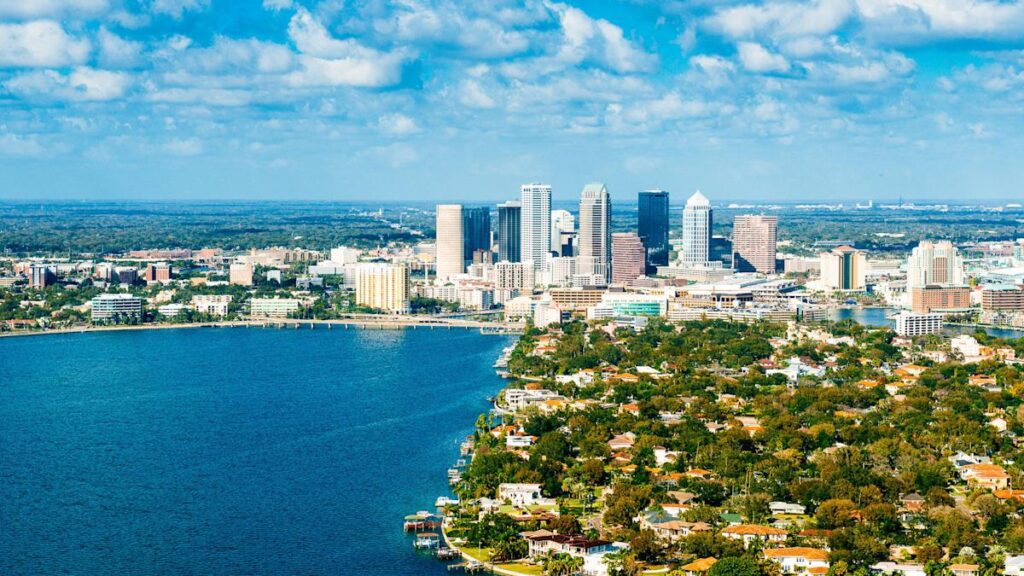Florida Real Estate Market Forecast: 6 Cities Facing Significant Home Price Declines by 2026
Florida continues to be a highly desirable destination for relocation, especially for retirees and those seeking sunshine and coastal living. However, recent trends indicate that the Florida housing market is entering a challenging phase, with home prices expected to drop significantly in several key cities by early 2026. Understanding these market shifts can help buyers and investors make informed decisions in the Sunshine State’s evolving real estate landscape.
Why Are Florida Home Prices Dropping?
The Impact of Climate Change and Rising Insurance Costs
Florida’s popularity has long been driven by its warm climate and scenic coastlines. Ironically, these same factors now contribute to an increasing exodus and declining home prices. The state’s vulnerability to climate change—marked by rising sea levels, stronger hurricanes, frequent flooding, and extreme heat—is leading to skyrocketing home insurance premiums.
According to Max Dugan-Knight, a climate data scientist at Deep Sky,
“Stronger hurricanes and worse flooding means more expensive home insurance, which means challenges getting approved for a mortgage, which ultimately pushes home prices down.”
This cycle creates affordability issues for buyers and sellers alike, as insurance costs can add thousands to annual housing expenses in areas most at risk.
6 Florida Cities Primed for Home Price Declines by 2026
1. Port St. Lucie: An Unsustainable Housing Boom
- Average home value: nearly $400,000
- Market driven by inflated prices well beyond local incomes
Phil Green, CEO at I Buy SD, remarks:
“This area seems to be observing astronomical pricing for homes, far above what local incomes could realistically support. Normal income families quickly get priced out from the get-go.”
This dynamic is a classic indicator of a market correction, where high prices force out buyers and pressure sellers to reduce asking prices.
2. Lakeland: Oversupply and Foreclosure Upswing
Lakeland’s market is grappling with an inventory surplus due to a recent surge in new home construction. Jenna Stauffer, real estate advisor at Sotheby’s International Realty, points out:
“Now, it has an inventory glut and a noticeable uptick in foreclosures.”
An oversupply often signals weakening demand, pushing prices down as sellers compete for fewer buyers.
3. Punta Gorda: Hurricane Ian’s Long-Term Aftermath
Home prices in Punta Gorda have already fallen 10% in the past year, a trend expected to continue. Besides increased insurance burdens, the city struggles with median home prices that have outpaced local income growth—creating a sustainability problem.
“It was hit hard by Hurricane Ian, so is also facing the threat of rising insurance costs especially in older and/or waterfront homes,” says Jenna Stauffer.
4. Palm Bay: Pandemic Boom Turns to Bust
Palm Bay’s housing sector was buoyed by pandemic demand, particularly for affordable homes under $300,000. However, Daniel Blake of Clever Offers observes demand has cooled:
“If inflation persists or if we have a mild recession, Palm Bay can anticipate price declines of 10%-15% over the next 18-24 months.”
The surge of new construction amid slowing buyer activity has created downward pressure on prices.
5. Tampa: Overbuilding and Rising Costs Create Challenges
One of the pandemic hotspots for out-of-state buyers, Tampa now faces excessive inventory created by overbuilding. Nearly half the listings remain unsold for more than 60 days, signaling a sluggish market.
Alexei Morgado, CEO of Lexawise Real Estate Exam Preparation, explains:
“The price correction is not a short-term anomaly, it’s structural. With affordability constricting due to insurance costs often exceeding $6,000 annually, many potential buyers are priced out.”
This situation drives ongoing price reductions to stimulate transactions.
6. Other Potential Markets to Watch
Several other Florida cities may experience similar pressures due to climate risks, insurance hikes, and oversupply. Prospective buyers should monitor regional real estate data closely to identify emerging opportunities.
What Does This Mean for Buyers?
- Affordability Opportunities: Falling home prices in these cities may enable budget-conscious buyers to enter markets previously considered too expensive.
- Increased Mortgage Scrutiny: Rising insurance costs can complicate lending approvals, so buyers must plan for higher total housing expenses.
- Long-Term Market Outlook: Many price corrections are connected to structural issues like overbuilding and climate risk, suggesting prolonged downturns rather than short-term dips.
Expert Tips for Navigating the Florida Housing Market
- Research Insurance Costs: Prioritize understanding flood and hurricane insurance premiums when evaluating properties.
- Analyze Local Income Trends: Compare home prices to local median incomes to assess market sustainability Explore Median Income Statistics.
- Hire Local Real Estate Experts: Leverage advisors familiar with micro-market dynamics to avoid overpaying amid volatile conditions.
- Consider Climate Resilience: Focus on homes with updated infrastructure or located in less flood-prone areas to mitigate future risks.
Conclusion
The Florida real estate market is poised for significant changes as climate-related risks and economic factors reshape demand. Cities like Port St. Lucie, Lakeland, Punta Gorda, Palm Bay, and Tampa illustrate the complexities impacting home values, from soaring insurance costs to overbuilding and income mismatches. For buyers and investors, understanding these dynamics—and acting strategically—can unlock promising opportunities amid an evolving housing landscape.
For more insights into US housing markets and affordability trends, visit GOBankingRates.
Discover more about Florida’s real estate outlook:
- Florida’s Growing Climate Challenges
- Understanding Home Insurance Costs
- How to Buy a Home in a Declining Market
Stay informed and prepare wisely to navigate the shifts in Florida’s housing market in the years ahead.


